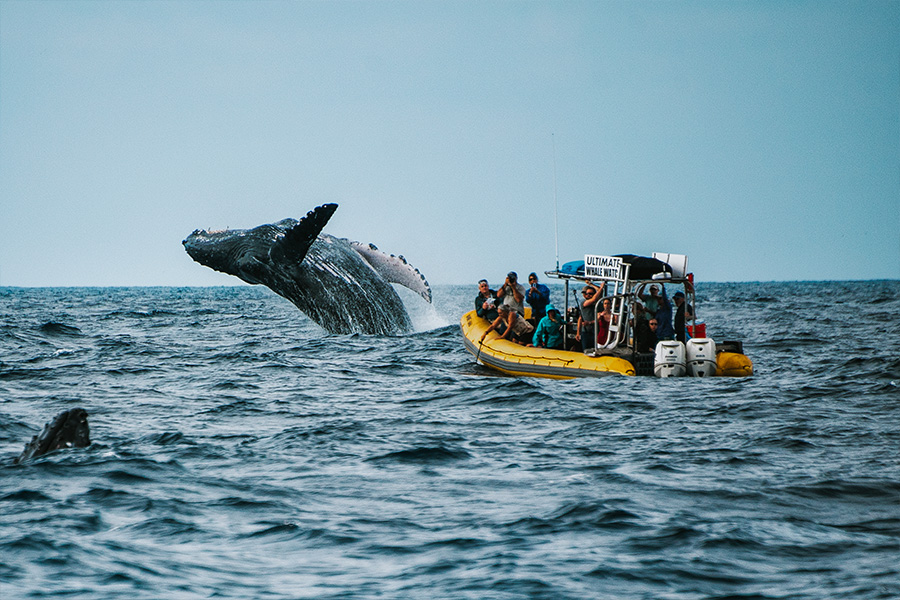Pursuing Majestic Giants: The Adrenaline Rush of Viewing Whales
Whale watching is an unforgettable experience that attracts countless adventure seekers to the ocean's edge each year. As these impressive giants leap and glide through the water, onlookers are left in amazement of their immense size and grace. The thrill of spotting a whale in its natural habitat evokes a sense of wonder that few experiences can match. Whether it’s the breathtaking moment a humpback whale leaps from the water or the tranquil sight of a gray whale migrating along the coast, every encounter tells a story of nature's greatness.
The journey of witnessing these magnificent creatures is not just about the sight; it involves the anticipation, the beauty of the ocean, and the spontaneous joy of witnessing wildlife in their element. For many, whale watching is not just a pastime; it’s a chance to bond with the ocean and to appreciate the delicate balance of marine ecosystems. Each tour offers a distinct opportunity to learn about these remarkable animals and the importance of preserving their homes, making it a significant adventure for every participant.
Grasping Cetacean Behavior

Whale actions is simultaneously captivating and complex, revealing the intelligence and adaptability of these magnificent creatures. Whales are gregarious animals, frequently traveling in pods, which can vary from small family groups to bigger assemblies during foraging or breeding seasons. Observing these communal interactions provides understanding into their communication techniques, including sounds and physical movements. Comprehending these actions improves the experience of whale viewing, as it allows enthusiasts to value the relationships and dynamics within pods.
Foraging techniques also play a significant role in whale behavior. whale watching in iceland utilize a diversity of methods to catch their prey, from the bubble-net feeding of humpback cetaceans to the deep dips of sperm whales in pursuit of squid. Seasonal migrations are another important aspect; cetaceans often travel numerous of miles between feeding grounds and mating areas. Understanding the feeding habits and travel patterns helps whale observers anticipate where and when to spot these behemoths in the sea.
Furthermore, whale actions can vary based on environmental conditions and anthropic activity. Factors such as water temperature, food accessibility, and boat movement can influence how cetaceans surface, breach, or dive. Being aware of these surrounding elements enables watchers to more accurately comprehend the reasons behind the whales' actions, enriching the complete journey of whale viewing. As enthusiasts witness these actions firsthand, they cultivate a deeper understanding for the struggles and wonders of marine life.
Top Cetacean Watching Destinations
One of the top whale watching locations in the world is Maui. The ocean around this tropical paradise are famous for their abundance of humpback whales, especially during the migration season from December to early spring. Tourists can take guided boat tours or opt for kayaking adventures to get up close and intimate with these majestic giants. The tranquil backdrop of the Hawaiian Islands enhances the experience, making it an memorable journey for wildlife lovers.
Another remarkable location for whale viewing is the Basin of Fundy, situated between NB and Nova Scotia in Canada. Renowned for having the highest tides in the world, the Bay of Fundy is home to a diverse array of whale species, including the massive blue whale and the curious minke whale. Whale viewing tours in this area offer a rare opportunity to witness these awesome creatures in their natural habitat amidst stunning coastal scenery.
The Monterey Bay is also a popular destination for those looking to spot whales. This coastal region is a hotspot for marine life, attracting various species throughout the year, including gray whales, orcas, and humpback whales. The rich waters provide an optimal environment for these large mammals, and whale viewing excursions often come with the chance to see other wildlife such as dolphins and sea lions, making it a full marine adventure.
Preservation and Morality in Whale Observation
Whale watching has increased in appeal over the years, leading to increased awareness about the necessity for preservation. However, this increase in enthusiasm must be paired with responsible practices to ensure that whale populations thrive. Eco-friendly whale observation tours prioritize minimal disturbance to the creatures and their environments. Tour guides who follow guidelines established by marine conservation organizations can provide significant experiences without harming the very animals that draw in visitors.
Moral considerations play a crucial part in how whale watching is conducted. Tourists should choose operators who value marine life and maintain a comfortable distance from the marine mammals. This ensures that the creatures are not disturbed and can continue their instinctual behaviors. Knowledge about the types being observed can enhance understanding and dedication to preservation, empowering tourists to give back positively to the ecosystems they explore.
In conclusion, supporting preservation efforts through responsible whale observation can help protect these magnificent creatures for future generations. A share of profits from trustworthy tours often goes towards marine research and habitat conservation projects. By participating in ethical whale watching, individuals can enjoy the thrill of observing these mighty creatures while also promoting the sustainability of marine environments. This dual benefit strengthens the notion that thrilling adventures and preservation can coexist harmoniously.